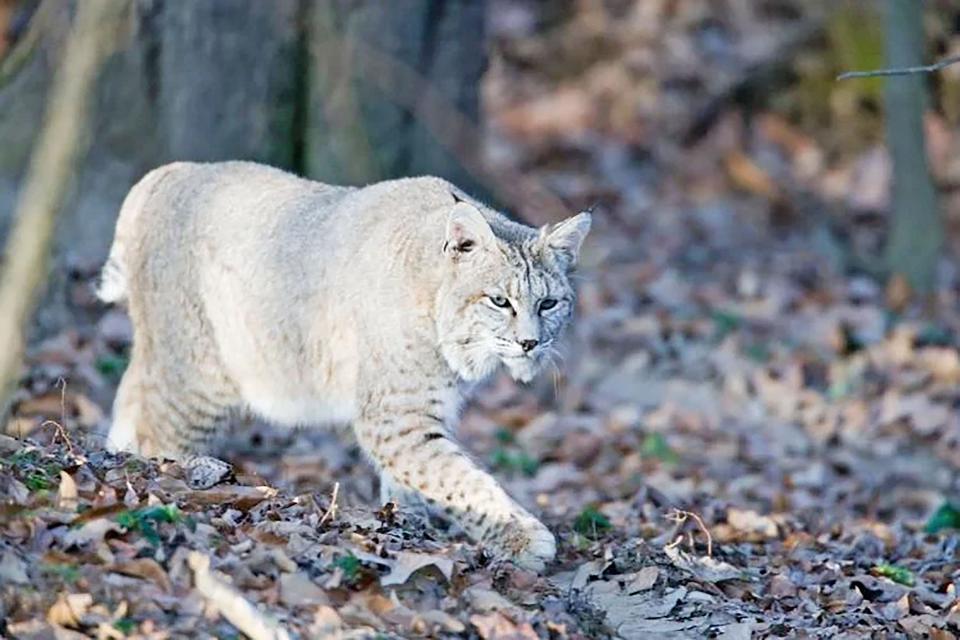Bobcat sighting inside Columbia city limits? It's possible, says conservation biologist
A recent social media post noted a Columbia resident possibly had seen a mountain lion up a tree in an area northeast of downtown. Others online supposed it could have been a bobcat instead. Nate Bowersock, black bear and fur bearer biologist with the Missouri Department of Conservation says large cat sightings are starting to become more common in urban areas.
"These days we are starting to see more bobcat activity near developed areas," he said, adding they still are more common to see in less developed rural areas in Boone County and throughout the state. "A couple years ago there were some bobcats running around a neighborhood in Kansas City. They can figure out how to live secretively among human dwellings, that's for sure."

Mountain lions are much less likely to see in Missouri as there is not an established population here, Bowersock added. That doesn't mean there are not sightings now and again, including a confirmed sighting in northern Boone County in January 2023.
MDC's large carnivore response team is the unit that works to confirm sightings.
"Mountain lions roam through the state from time to time. Bobcats on the other hand are a common and native species here in Missouri," Bowersock said. "Wild cat species tend to live alone unless it is a female with kittens and if they can, tend to live in areas that are less developed.
"Given that humans are continuing to expand on the landscape, we are seeing bobcats learning to live with humans in closer quarters."
Bobcats living in more urban areas may shift their behavior patterns to more nocturnal activity, he added, noting that wildlife, regardless of species, are more likely seen in the pre-dawn or dusk hours.
Not just bobcats in urban areas
Other carnivorous species making their way into urban areas include gray or red foxes and coyotes.
"The couple places I have lived in Columbia, I have seen both species of fox and have heard coyotes fairly regularly," Bowersock said.
Now that it is the late spring, it may be more common to see wildlife activity as one generation reaches maturity and leaves nests or dens and the next generation is born.
"Hypothetically, you could be seeing a bit more activity with younger animals figuring out what to do now that they are likely on their own. They still are pretty active throughout the year," Bowersock said, adding some activity may decrease in March and April due to denning behavior. "This time of year, animals are starting to move about more especially with how green things are. There's more food available, so animals are moving about the landscape."
Other common species to see in Boone County and elsewhere in the state obviously include deer, but people can even see river otters, raccoons, opossum.
"These are all furbearer species and are all very active within Boone County let alone within the Columbia area," Bowersock said.
MDC wants rare breed sighting reports
While MDC is interested in wildlife sighting reports, it mostly is on the lookout for those on mountain lions and bears, but also rarer species, including spotted skunk, American badger, the least weasel and long-tailed weasel. It is more likely a person will catch a wildlife image with a trail camera than a quickly snapped picture with a cellphone. That does not mean it has not happened though, Bowersock said.
The rarer furbearers are not because of any sort of threatened status, but their population numbers still are down in the state.
"Their populations on a national scale are doing all right, and arguably in Missouri could be doing well, but they are very secretive animals, really avoid people and it is hard to see them. So, over time when we were used to seeing them on a certain occasion, it has become less and less," Bowersock said, adding MDC is trying to determine if they have just moved to different areas because of human impacts or if populations actually are declining.
Sighting reports on the rare species is helping determine where they are on a regular basis or when MDC may want to conduct a study on one particular species.
"Right now we are doing a study on spotted skunks in the southern half of the state. We set up cameras based on previous reports. We still are getting pictures, just not very many. Any reports we could get even up in Boone County would be wonderful," Bowersock said.
Staying safe when encountering larger animals
If a person is out hiking or on a trail and does come across a large cat species or a bear, Bowersock recommends to stay calm, never run and if a person has the ability to back away slowly.
"Bears and even mountain lions at the end of the day tend to want nothing to do with humans and tend to be quite scared of humans in most cases," he said.
If an animal still is intent on a person even after backing away, then it may be a time to do an opposite activity.
"You make yourself big, waving arms and making noise. That will deter the animal from trying to engage with you. If you do have an encounter, definitely give us a call so we can put some people on the ground to see what kind of activity is going on in that area," Bowersock said.
Charles Dunlap covers local government, community stories and other general subjects for the Tribune. You can reach him at cdunlap@columbiatribune.com or @CD_CDT on Twitter. Subscribe to support vital local journalism.
This article originally appeared on Columbia Daily Tribune: Bobcats roaming urban areas in Missouri becoming more common

